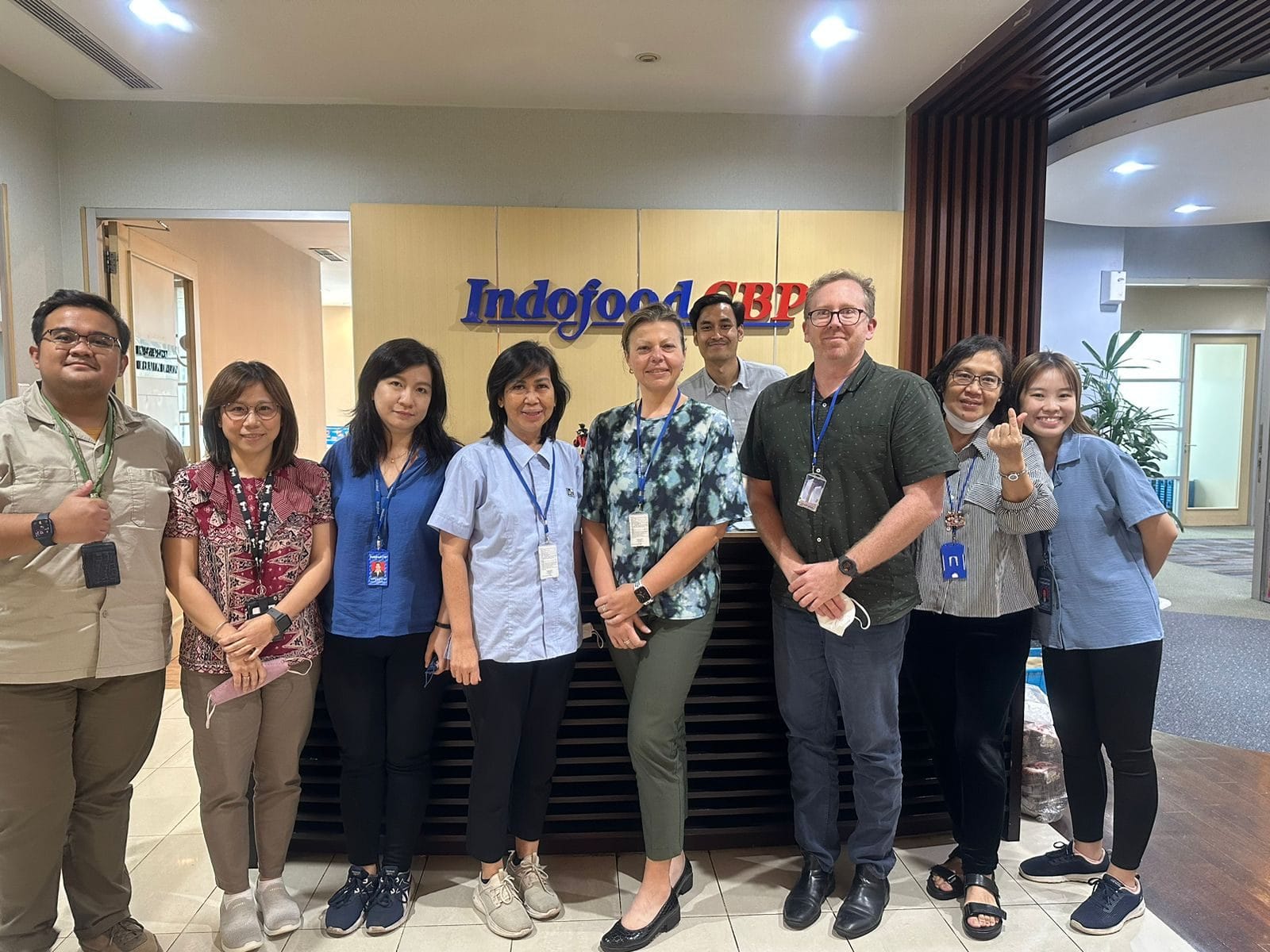After several years of limited travel, it’s fantastic to be back in person in Australia’s key markets.
Engaging with customers face to face allows us to demonstrate hands-on the specific benefits of Australian wheat and other grains. Importantly, it also gives customers the chance to give us feedback on any issues they may be having with Australian grain quality or supply.
AEGIC Wheat Quality Technical Markets Manager Dr Larisa Cato and Senior Economist Dr Chris Carter recently spent two weeks travelling across Indonesia speaking with the production and technical teams of several flour milling companies about their wheat quality requirements, and exploring opportunities to get more value from Australian wheat.
Australian wheat has a good reputation in Indonesia, especially for noodles, and Indonesia is typically Australia’s biggest wheat buyer. But in recent years, Australian wheat exports have been under intense pressure from lower-cost exporters. We believe continually keeping Indonesian customers engaged, informed and educated about the benefits of using Australian wheat is crucial to ensure Australian wheat is positioned as a preferred choice.
Larisa and Chris visited mills, food companies and universities in Jakarta, Makassar and Semarang.



Long-time collaborators
AEGIC has collaborated with Bogasari, the largest flour mill in the world, for many years. It’s always fantastic to get back in the lab with our friends at Bogasari and demonstrate the quality and value of Australian wheat.
During this trip, we explored potential new uses for low-protein Australian hard wheat, including crunchy snacks and cakes. Identifying products that can be made with low protein wheat might help preserve demand if hard wheat gets downgraded because of low protein.
Separately, we were also very pleased to spend time with our friends at Sriboga Raturaya Flour Mill, Eastern Pearl Flour Mill, Cerestar and Mayora.



“Made in Indonesia with Australian oats”.
Chris Carter spotted these premium products in Jakarta marketed as containing Australian oats. Asian consumers are becoming increasingly health-conscious – a great opportunity for Australian oats. With investment from the WA Government through DPIRD, AEGIC is helping position Australian oats as the preferred choice in Asian markets.
Chris is also investigating the health and sustainability claims of Asian food products to identify potential trends and opportunities for Australian grains.



Australian wheat: street food star
As always, Larisa and Chris made a point of sampling as many Indonesian wheat food products as possible in between meetings. Australian wheat is used across Indonesia, mainly for noodles, but also for snack products and as general purpose flour.
One of the most popular snacks in Indonesia is martabak, a pan-fried bread product, which comes in various savoury and sweet forms and is often made with Australian wheat.
Getting more Australian wheat into premium bread and bakery products is a key focus for AEGIC and one of our favourite topics when we speak to mills.


Thank you very much to all our Indonesian collaborators for making the time to meet with AEGIC and talk about the benefits of Australian wheat. AEGIC has been travelling across South East Asia, Japan and Korea during May, June and July. Stay tuned for more updates.





